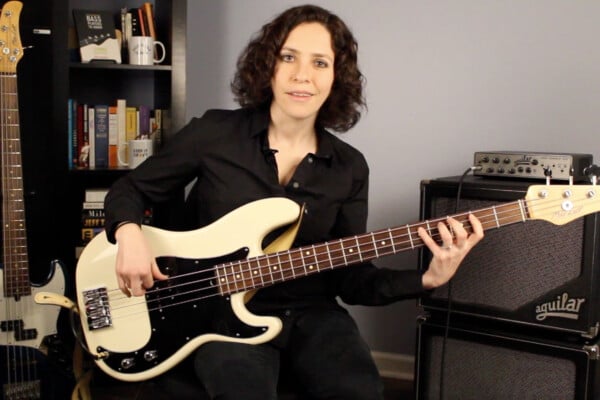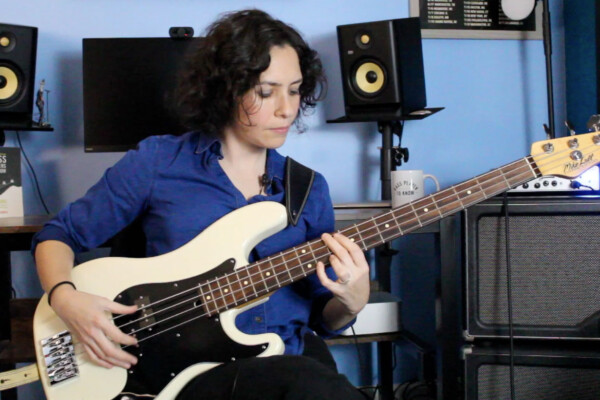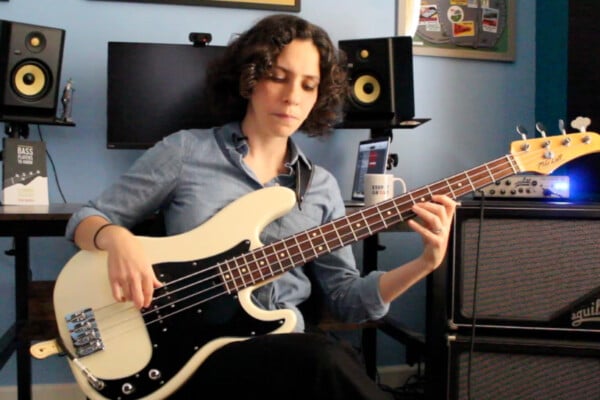Intonation or Feel? Practicing Scales Purposefully

Q: I was wondering what I need to pay attention to when practicing. It’s easy to learn a scale, or to play chord tones, but what should I really pay attention to hearing more? Should that be a focus on the tones, or the difference in intonation or the “feel” between them?
A: The short answer is this: You have to pay attention to all of it.
Be careful when you say that you know something or that “it’s easy”. Generally speaking, if you think it’s easy, you might not be looking closely enough. Nothing is usually easy to do well without years spent working on the ability.
In my routine, I focus on scales, chords and arpeggios, as well as the dissonance or consonance of tones and how they can work for you melodically. Let’s break this up a little bit and dig deeper. But first, let me explain why I say to be careful when you decide that you know something.
Music happens in real time and travels in many directions. I have come across many students who say they know their modes, or even just the major scale well. But when asked to play it in a specific pattern or unfamiliar sequence, they fall apart on it. There is a big difference between knowing a scale in one or two octaves from root to root, or in one position on the neck, and really having the tonality internalized. Or being able to play in any mode of that scale or from any position or from any scale tone contained within that scale. Knowing it in one way is not truly knowing it, just like knowing how to hard boil an egg doesn’t make you a chef.
For example:
- Take a scale you feel comfortable with and try playing it in 3rds over two octaves (1 3 5 7 2 4 6 1 3 5 7 2 4 6 1).
- Now play it in broken 6ths (1 6, 2 7, 3 R, 4 9, etc.).
These are just a couple of quick examples of things that might trip someone up if they don’t really have it internalized.
Here’s another example of one of my favorite ways to challenge myself with chord scales (a chord scale is the combination of chord tones + available tensions for a chord type):
- Take a jazz tune like “Beautiful Love” or “Stella by Starlight”
- Play at a very slow tempo (40 or 50 bpm)
- Play 8th notes
- For each chord, play the appropriate chord scale in 3rds from root to root (Root 3 5 7 9 11 13 Root)
- Make double sure that you are fully considering each tension (9 11 13) for each chord type (i.e.: a #4 over a Major7 chord, b2 over a dominant b9 chord). You will also have to decide what sounds best to you (do you like a b6 on a b9 chord? Do you prefer a natural 9 or b9 on ø7 chords).
- Now do the same thing but start from varying degrees of the chord scale (first chord starts on the root, second chord starts on the 2nd degree, 3rd chord starts on the 3rd, and just loop it around and around).
Difficult, right?
Now this exercise and other like it will most assuredly make you aware of any lapses in your scaler internalization.
I’m not picking on you because you said it was easy and you knew it, but I had to try and show everybody that there are countless ways to challenge yourself with even the easiest of things (like the major scale). Never stop trying to explore what you already know more deeply!
Now, let’s move on to feeling the dissonance or consonance of two notes played together.
Try playing with a drone in your practice routine, with the goal of learning to hear different tonal interactions better. If you are playing against a C drone (just one note going on endlessly), it’s a fantastic (and fun) exercise to explore each note of the chromatic scale. Now, don’t just play a Db against a C and think, “yeah… that sounds pretty bad” and move on. Explore how that tension in the Db can lead to a resolution, like moving down to C for example or acting in a sequence of tension and release like, Db, C, F, E, Ab, G. Take the time to hear how every note sounds against a drone and then play with using your ears to move them around, regardless of a pre-determined tonality or tonal center.
It is also useful to train your ear by trying to sing an interval and then play it, to see if you were right. Try and hear every interval before you play it. This will help with transcriptions, improvisations and every aspect of your internal musicality.
I think we need to try and get the best of both worlds. Well trained ears + an understanding of harmony (the math-like side of things) = well rounded musicality.
Readers, what about you? What is your suggestion or routine? Please share in the comments.
Have a question for Damian Erskine? Send it to [email protected]. Check out Damian’s instructional books, Right Hand Drive and The Improviser’s Path.




Thanks Damian…you keep getting me back on track and motivate me…
Glad you found it helpful Lukas! If I remember correctly, you never need much help sounding like your on track and motivated. ;) hope you’re well man
What excellent ideas, Damian! The exercises here could keep us all busy for years. For those of us trying to improve on fretless, the drone exercise is priceless. What better test of intonation than resolving dissonant notes in tune? Thanks.
Always enjoy reading these “educational” and “informative” Q&A(s) here. Keep up the great work. Some of it will sink into my thick skull, eventually. Cheers!
The thirds exercise (#1) is interesting.. I’ve never thought of doing it that way. I’ve always played it as broken thirds, such as :
Asc: 1 3 2 4 3 5 4 6 5 7 6 1 7 2 1 3 2 4 3 5 4 6 5 7 6 1 7 2 1
Desc 1 6 7 5 6 4 5 3 4 2 3 1 2 7 1 6 7 5 6 4 53 4 2 3 1 2 7 1
Doing that with multiple different fingerings can get quite challenging.
The same goes for 7th arpeggios
Asc: 1 5 3 7 5 1 7 3 1 5 3 7 5 1
I’ve always found it helpful as a warm up/stretching exercise to play the 2 steps forward, one step back game. Like: G, A, B, A, B, C, B, C, D, C, D, E, D, E, F#, E, F#, G. Ascending and descending (2+ octaves) really loosens up the fingers. This is also insanely helpful with practicing fretless, it does a lot for immediate relative intonation for scale degrees.